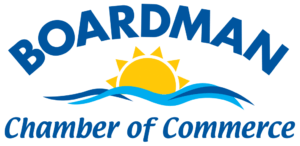Smart Strategies for Smoother Small Business Operations
Running a small business often means balancing limited time, money, and staff. Operational efficiency isn’t about doing more work — it’s about designing smarter systems that save time, cut costs, and improve outcomes. Whether you’re streamlining your processes, enhancing customer support, or investing in the right tools, small shifts can create a big impact.
Why Efficiency Matters
Efficient businesses:
-
Reduce wasted resources and manual errors.
-
Improve customer experience with faster response times.
-
Scale growth without hiring at every stage.
-
Free up owner and staff bandwidth for strategy and innovation.
Leveraging Technology for Smarter Operations
One of the most powerful ways for small businesses to improve efficiency is through exploring artificial intelligence in business. Tools in this category can:
-
Automate repetitive tasks like scheduling, data entry, and invoice processing.
-
Use analytics to provide decision-making insights that guide inventory, marketing, and hiring.
-
Deploy chat assistants that answer FAQs and reduce customer service wait times.
These shifts save time, reduce costs, and allow small teams to achieve more with fewer resources.
Practical Steps to Boost Efficiency
Here are some proven tactics small businesses can apply right away:
-
Standardize processes with SOPs or checklists to reduce mistakes.
-
Adopt cloud-based collaboration tools so staff can work from anywhere (see Google Workspace).
-
Use project management platforms like Trello or Asana to keep tasks visible and organized.
-
Digitize recordkeeping with platforms such as QuickBooks to minimize paper and manual calculations.
-
Outsource non-core functions like payroll through trusted providers such as Gusto.
Efficiency Strategies by Business Area
|
Area |
Tactic |
Example Resource/Tool |
|
Administration |
Automate invoices & scheduling |
|
|
Customer Service |
Deploy chat support for FAQs |
|
|
Marketing |
Use automated email sequences |
|
|
Finance |
Integrate expense tracking software |
|
|
Collaboration |
Implement shared document systems |
FAQ: Boosting Efficiency in Small Businesses
Do I need to invest heavily to see results?
Not necessarily. Many tools offer free tiers or affordable starter plans that already save hours of manual work.
How can I avoid overwhelming my team with new systems?
Start small. Implement one or two tools at a time and provide short training sessions.
What’s the biggest mistake small businesses make when improving operations?
Adding tools without clear processes. Technology should enhance — not complicate — your workflow.
Should I outsource or automate first?
Begin with automation for repetitive tasks. Outsource areas that require specialized expertise, like legal or accounting.
Spotlight Tool: Expensify
For small teams, Expensify is a simple way to automate expense tracking. It scans receipts, syncs with accounting software, and reduces manual bookkeeping — a quick win for improving efficiency.
Conclusion
Operational efficiency isn’t about cutting corners — it’s about creating systems that empower small businesses to grow sustainably. By standardizing processes, adopting the right tools, and knowing when to automate or outsource, owners can free up time and resources to focus on growth.
Discover the vibrant community of Boardman, Oregon, where every day is a beautiful day to live, work, and play. Visit the Boardman Chamber of Commerce to explore opportunities and become a part of our thriving region!

